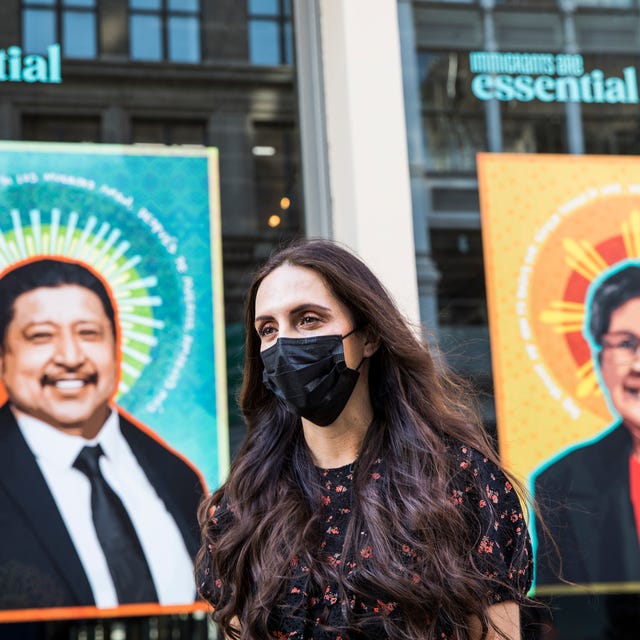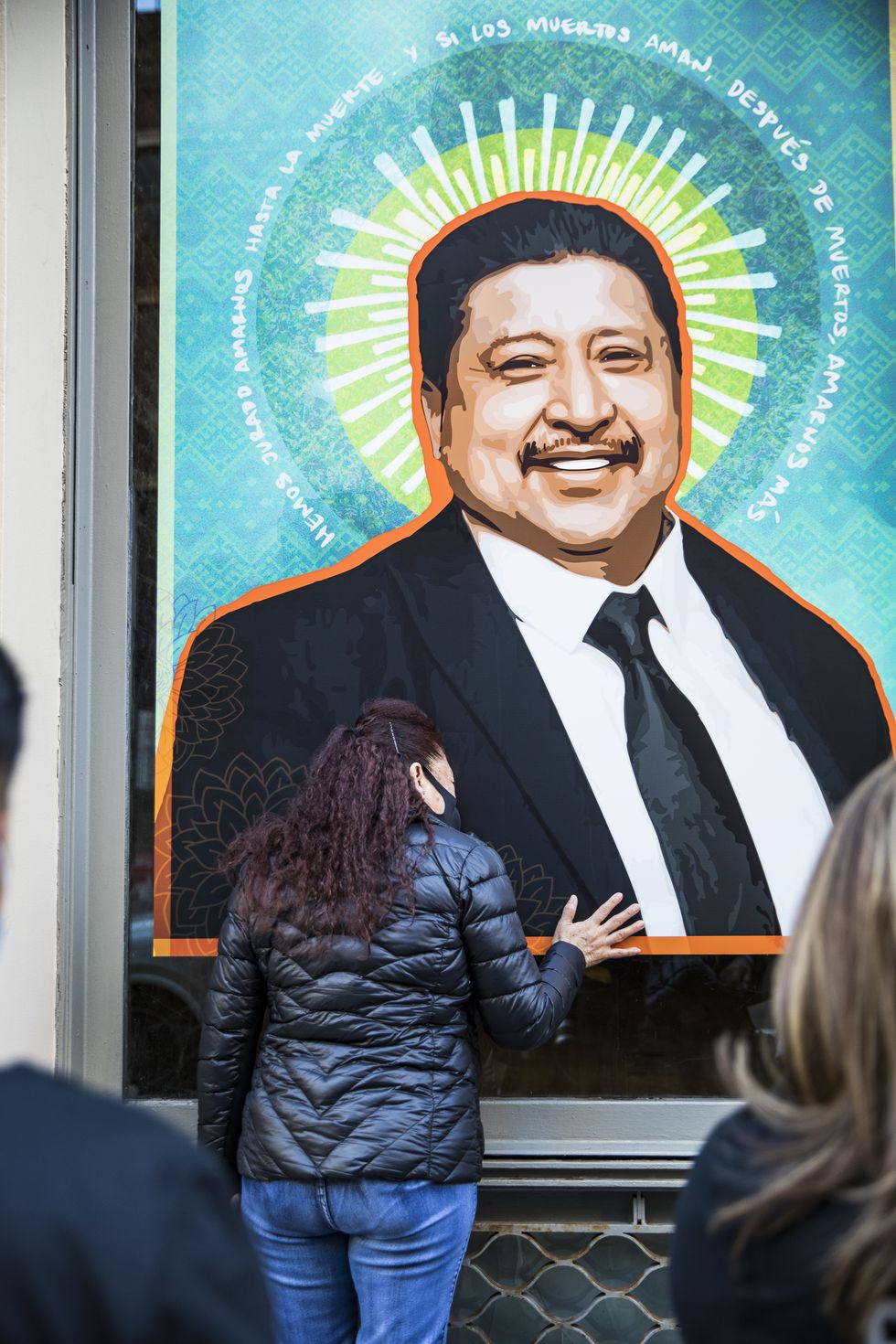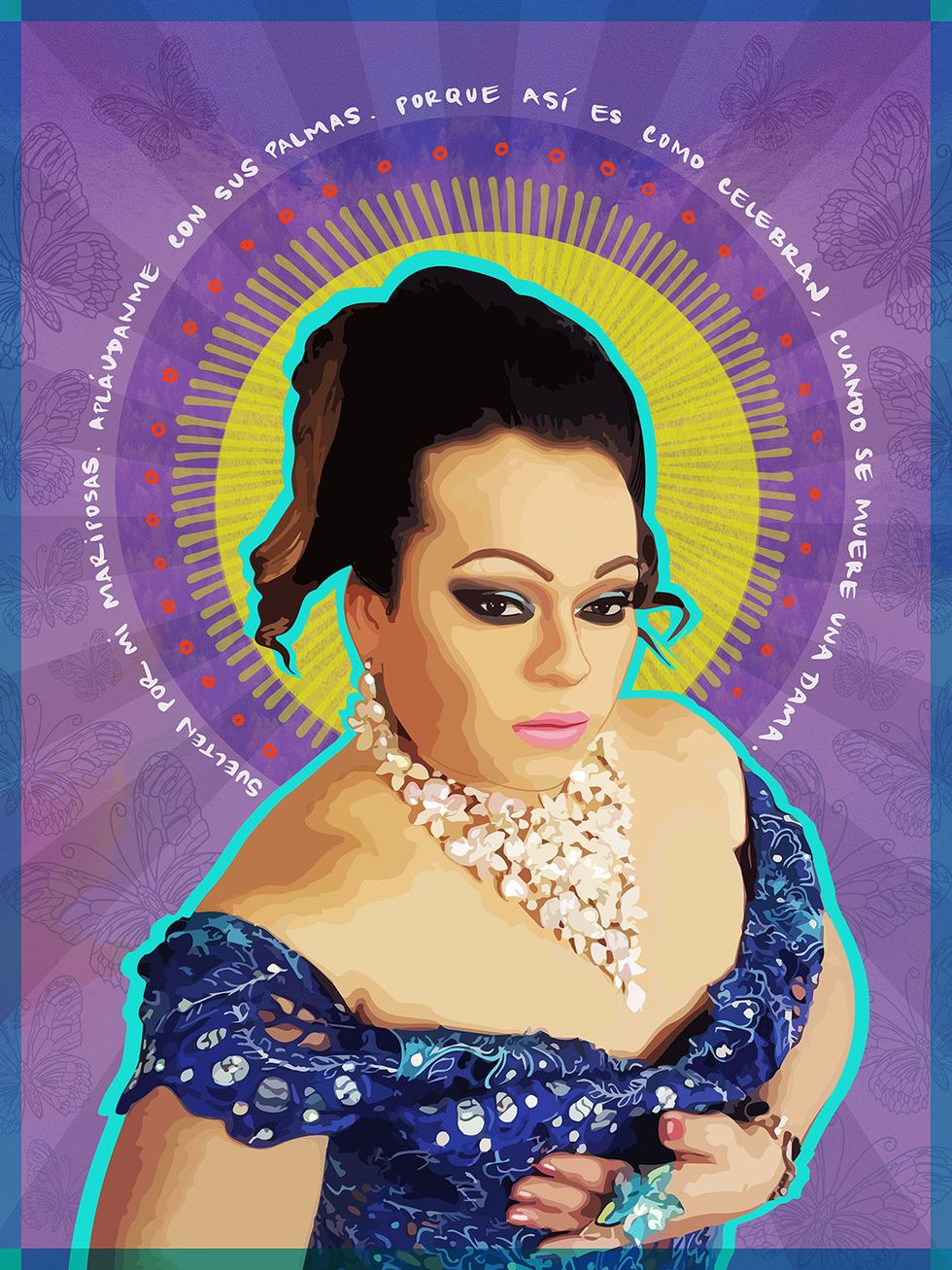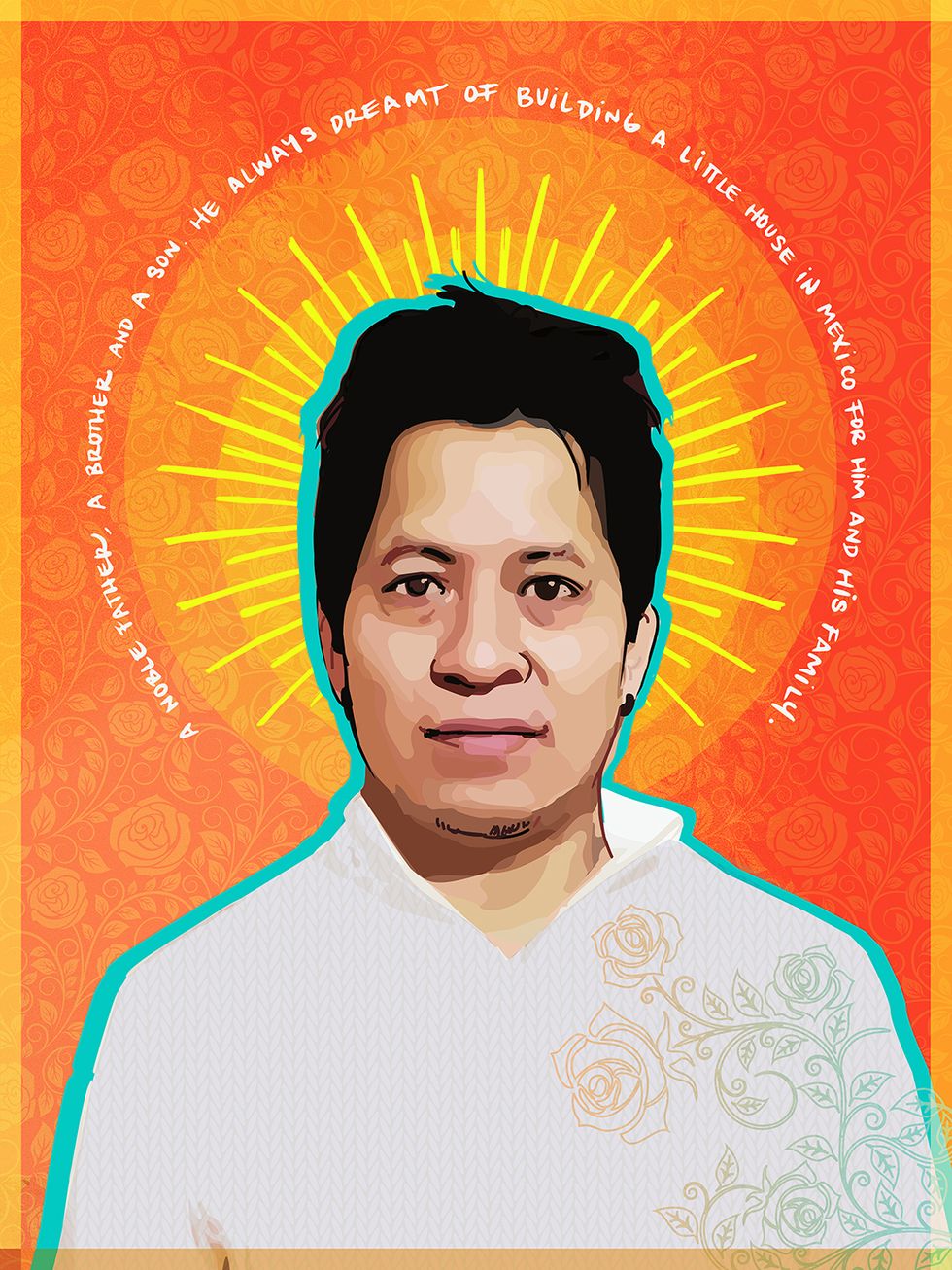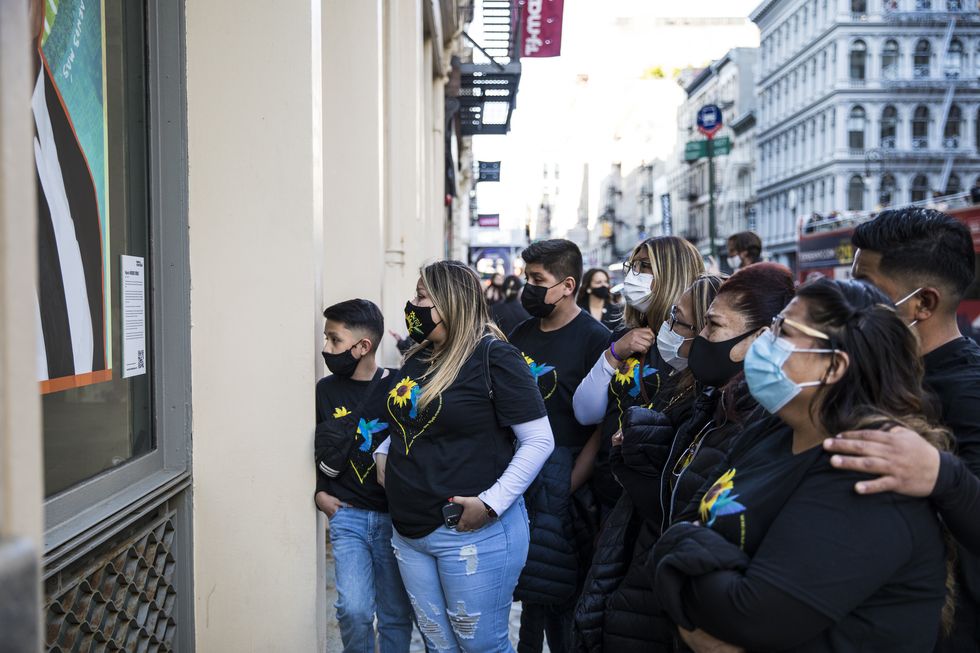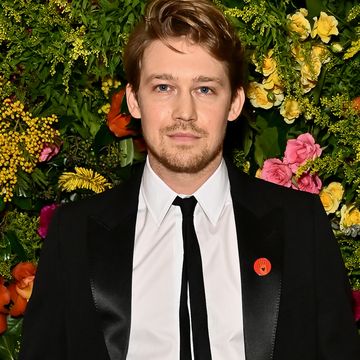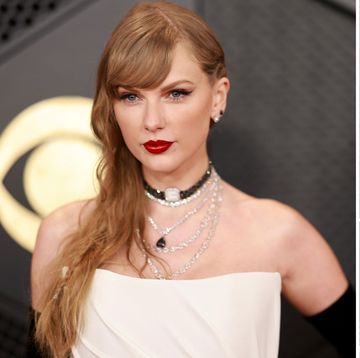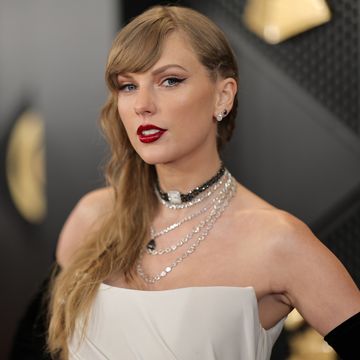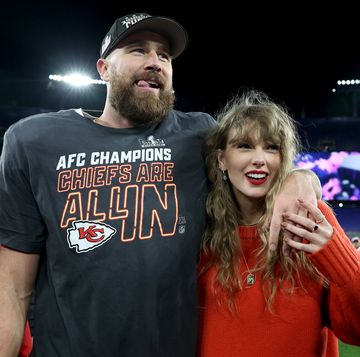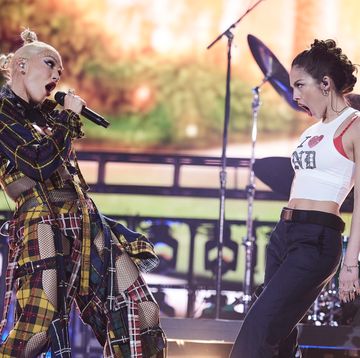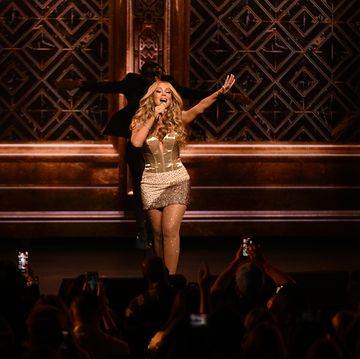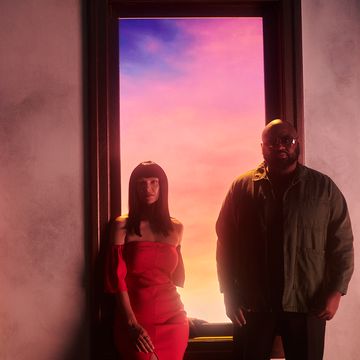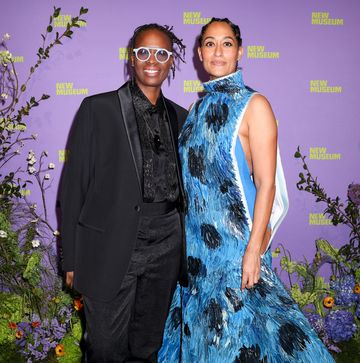The lives of seven undocumented immigrants who died of COVID-19 are at the center of activist-artist Paola Mendoza's new art installation, "Immigrants Are Essential," which takes its name from a campaign spearheaded by the National Immigration Law Center and Resilience Force.
The faces of Mario Hernandez Enríquez, Fedelina Lugasan, Yimel Alvarado, Juan Ramos, Guadalupe Aguilar Sánchez, Ofelia Tapia Alonso, and Moisés Hernández Delgado are digitally rendered in colorful, larger-than-life portraits plastered onto an empty storefront in New York City's neighborhood of SoHo. They represent just some of the tens of thousands of undocumented people whose lives were lost to the deadly virus in the past year.
"In some cases, they were essential workers," says Mendoza, a multidisciplinary artist whose work highlights human rights and immigration issues. She previously served as the artistic director for the Women’s March and, last year, co-authored Sanctuary with Abbey Sher, a young adult dystopian novel about the plight of one undocumented family living in Vermont. "But regardless of their status or what they were working in, they were essential to those families and, ultimately, I believe, essential to this country."
Accompanying each portrait is a recording, an oral history emotionally narrated by each person's family and friends. The sister of Yimel Alvarado, for example, describes her strength and hopefulness in life. Meanwhile, the daughters of Mario Hernandez Enríquez tearfully give thanks to their father for forging a better life for their family. In making the stories of their loss public, Mendoza hopes to galvanize viewers into action that will pressure the government to create a pathway to citizenship for the 11 million undocumented people living and working in the United States.
More than two-thirds of the country's undocumented population work in essential industries, increasing the likelihood of contracting COVID-19, per a recent study by FWD.us.
"We need to support our undocumented brothers and sisters with financial aid," Mendoza says. "They have been taking care of us for over a year now, and it's our turn to take care of them."
In New York, people can visit the SoHo installation for free through Thursday, April 29, or see the portraits in person at 2 Rivington Street until Monday, May 3. The portraits and oral histories are also available to see and listen to online.
Below, BAZAAR.com speaks to Mendoza about the public installation, the catharsis found in collective grief, and the power of political artwork today.
How did the idea of the installation first come to you?
The amount of people that have died of COVID has been, in many ways, hard to wrap our brains around, because the number is so high. I specifically started to think about the undocumented community who had been suffering in silence throughout COVID. I've been working within the undocumented community for almost 15 years now, and I've been telling the stories of undocumented immigrants for that same amount of time.
The idea came from really wanting to be able to provide a space for both private and public mourning for a community that has been so critical in making sure the United States has been able to function, whether that's putting food on our tables, running our hospitals, or running our transportation. And also knowing that this community has not been taken care of by the federal government and very little by specific state governments. It was my way to give a platform to those families that have lost people. In some cases, they were essential workers. But regardless of their status or what they were working in, they were essential to those families and, ultimately, I believe, essential to this country.
What you said about private and public mourning is really interesting. I think there's something very cathartic and relieving about having grief being made public. Did you know from the beginning that you wanted these portraits to be installed in public?
Absolutely. I knew that I wanted the portraits to be in public. I knew that I wanted them to be very big, larger than life. I wanted them to be in a place that many people congregate, and a place that was almost unexpected for mourning to happen, which is why I chose SoHo. The idea of an empty storefront was very specific, as well.
When I first started coming out of my home in the pandemic, I saw all of these empty storefronts in Brooklyn and Manhattan, and it was getting to me. It hurt me, because there was a physical manifestation of loss and pain of what we had been through. Then, I realized that we didn't have that physical manifestation of people that had been lost. So I really wanted to make people have that guttural response of losing a "business," but then actually confronting them with something that's more important than the business that's been lost, which is the people that have been lost.
And what is our responsibility to those people who have been lost? What is our responsibility to the families who lost their loved ones to COVID, because they were making sure that we had food on our tables? They themselves come from mixed-status families. I feel that we have a responsibility to then take care of those families that have been left without their loved one and, on top of it, don't have papers. All of that was very, very intentional, because I think we need to have these conversations.
When we had the opening on Friday with the families, they came and they saw the portraits, it was in many ways a wake. These families were weeping at the portraits. There was one woman whose husband died, who kept on caressing the portrait and saying his name over and over. It was a very private moment, but to experience that publicly, I hope was able to provide a little bit of healing for those that were watching. And even for her, to know that she wasn't mourning in that moment completely alone.
Can you take me through the steps of gathering the oral histories? How did you find and choose which people you wanted to honor in the installation?
It was a long process. It took me about two to three months to find the families. I worked with a lot of different organizations that work with undocumented immigrants. Two local politicians in Queens, Catalina Cruz and Jessica González-Rojas, who I have a dear friendship with, reached out and told me stories about their constituents. I did a lot of research on newspaper articles, and then reached out to journalists or found the people on Facebook. It was definitely a deep investigation to find these stories.
Once I was able to get in contact with the families, they were so grateful to have someone simply listen to their family's loss and learn about the person that had been taken from them. I had two initial conversations with them, and then I set up an interview. It was all done virtually, because, obviously, those families lost someone so I was very sensitive to where they might be in the COVID spectrum of risk. So it was a very low-risk interaction. And I had an interview with them, and I talked to them about their loved ones, mostly in life. I really wanted to understand who they were as a person. And then those hour, hour and-a-half interviews were edited down to three- to six-minute oral histories.
The portraits themselves, I had the family send me photographs, and then I chose one and used the basis of that to create the portraits. It was very much rooted in bright colors. A lot of the elements in the portraits are inspired by things that they told me: Their favorite singers sometimes appear on the lyrics of the halo, their favorite flowers, their favorite color, the areas that they were from, trying to find specific textures that were from those areas. It's all very specific to each individual.
Is there a reason you landed on choosing seven people specifically?
There was not a specific number. I found a building that had seven windows available to it, and I found seven people who were very compelling. I hope to be able to take this exhibition and to other cities across the country and ideally expand the people that we're celebrating, because, as we know, there's hundreds of thousands of people who have been lost to this pandemic.
Looking at the portraits and listening to the oral histories can bring up a lot of emotions. What was that process like for you personally?
It was really hard. There were many times that I was crying with the families on the phone. There were many times that I would hang up. The other thing is all of these families lost their loved ones within the first month of the pandemic, so it was very shocking to them. I think that if you lost someone in August, not that it makes it any easier, but we understood the pandemic in a different way. We understood that it was here. We had been living with the fear of it. These families didn't know what was happening. The world was falling apart, and then they lost someone.
One person in particular, Moisés, was 34 years old and he had a 10-year-old daughter, and I have an eight-year-old son. When Moisés died, his daughter had no idea what was happening, that the pandemic was even here. And I remember hanging up the phone, sitting on the couch with my son, hugging him and crying, and him asking me why I was crying and me telling him. I do a lot of work where I tell hard, painful stories, and I don't shy away from the emotions that come with it. I just simply can't. I accept them for what they are, and they live with me for quite a long time.
But at the end of the day, being with the families on Friday and sharing that moment with them, and, again, crying with them, it is an honor to be able to be that vessel, that bridge, for them and to see that they were so moved. Looking at them while they just stared at a portrait of their loved one makes the little amount of pain in comparison to what they're going through completely manageable.
In "I Am a Child," a campaign you worked on in 2018 to raise awareness about former president Donald Trump's zero-tolerance policy, you mentioned that you took inspiration from the 1968 "I Am a Man" protests by Black sewage and sanitation workers in Tennessee during the civil rights movement. Did you have any other kind of influences in mind while working on this project?
That's a great question. I didn't. There isn't a specific moment in time that we connected to this campaign and this visual language.
I will say that almost all of the stories I tell are from Latin America. So if there is an influence, it is of Latin America. It is the vibrancy, the colors. I'm also from Latin America, I'm Colombian. The culture, the specific spaces and places we honor our dead—that's the influence there.
At first, when I was telling people about this project, because they thought it was about death, people believed that it was dark and somber and sad. And the opposite of that is what I wanted to explore. I wanted to celebrate them. But their loss and their death, I can't forget about it. We can't ignore it. We can't just let it be another number.
So having the portraits be as vibrant as they are, it's inviting. It makes you stop and makes you look. Then, when you approach and read what it's about, I see it on people's faces when it happens—the physical change in them. Some people leave. Most people stay, because we all in this past year have lost something, if not someone. We are all in mourning. To take that moment of surprise, of not planned mourning and introspection, is part of the goal of this art installation as well.
You've been working within the artistic and activist space for a while now. What do you think is the function of art and bringing about a more just or equitable world?
I have a very specific view on this, and it has been my life's work. There's a quote from Bertolt Brecht, who was a playwright and a director in Germany, and was exiled during the Nazi regime. He said, "Art is not a mirror held up to reality, but a hammer with which to shape it." That is how I enter the world of artistry. I'm a storyteller. I work in various mediums. I write books, I make movies, I work in photography, I'm dabbling now in art installations. But at the end of the day, what I'm doing is telling stories, and the stories that I'm choosing to tell have very specific points of view. I want the world to be a very specific kind of place, and I'm unapologetic about that, but I don't make propaganda. I really try to take my artistry and have it live in spaces of nuance and complication and compassion and feelings that are full of depth.
I think that under the Trump administration—I call those now the years of terror—people were more open to that type of art, because we were living in such an extreme circumstance. Now, what I want is, while we're no longer in "the years of terror," we still are very much in danger. I believe the power and the responsibility of the artist is just as critical as it was in 2016. I want the public to be able to still be moved and inspired by this type of art, and then go out and live the values that this art is asking us to live.
Do you find challenges associated with creating art like this?
My work tends to draw on the very difficult aspects of life, specifically immigration, but the goal is to infuse it with love and dignity and a tremendous amount of care. So, while the stories are painful, I hope that it's not just pain for pain's sake. It's not just difficulty for difficulty's sake. But rather, its authenticity and dignity and love, and then what do we do with that?
As an example, Fedelina's story is so unimaginable, so painful, and so unfair. She was enslaved for 65 years, found her freedom, fought for her freedom at the age of 83, lived in freedom for one year, and then was taken by COVID. That is just an injustice that is so unfathomable. But once we know her story, then we can't ignore so many things that her story brings up. You can't ignore that there are people living in bondage here in the United States. You can't ignore the injustices that she was forced to live for decades here in the United States. She herself was forced to become undocumented. Then, she died of a disease that was completely mishandled at the beginning of this pandemic. Once we know these things, then what do we do with her story? We talk about her, we celebrate her, and we hopefully fight to make sure that another Fedelina doesn't have to live those circumstances of injustice anymore.
What can the average person do right now to support undocumented immigrants in the United States?
There are a lot. The campaign is linked to a petition that [the National Immigration Law Center] is supporting, which demands that the administration and members of Congress find a pathway to citizenship for the 11 million undocumented immigrants that currently live in this country. We need to make sure that is able to happen with this new administration.
That's the big ask, and then there are smaller asks that are on the state level. We need to support our undocumented brothers and sisters with financial aid. They have been taking care of us for over a year now, and it's our turn to take care of them.
There are organizations that people can follow and support that are doing great work around fighting for legislation for the 11 million that are undocumented here, whether that's NILC or United We Dream. We need to organize and push our elected officials the way that we did under the Trump years, because now is the time where we can actually envision and create the world that we want instead of just being on the defense. But it takes the same amount of work in order to get that world created.
Is there anything that's giving you hope right now?
All of these families that I spoke to said that it was important for undocumented immigrants to be able to have a pathway to citizenship, that while their loved one was not able to accomplish that, they felt that it was incredibly important for others to have that. To me, in that moment, they were so selfless. They weren't thinking of their pain. They were thinking about others and how much pain they found themselves in knowing that they still didn't have access to papers. That ability to be so selfless and to put the desires and the needs and the justice of other people before their own pain was very inspiring to me.
I think that's the lesson learned here too. COVID has reminded us all that we are interconnected and that we need each other in ways that we didn't fully understand, because it was just a given in our everyday lives. Now that we know how much we need one another, what do we do with that knowledge? We need to continue to care for one another. We need to continue to make sure that equity is at the center of how we're moving forward in the world.
This interview has been edited and condensed for clarity.
As an associate editor at HarpersBAZAAR.com, Chelsey keeps a finger on the pulse on all things celeb news. She also writes on social movements, connecting with activists leading the fight on workers' rights, climate justice, and more. Offline, she’s probably spending too much time on TikTok, rewatching Emma (the 2020 version, of course), or buying yet another corset.
